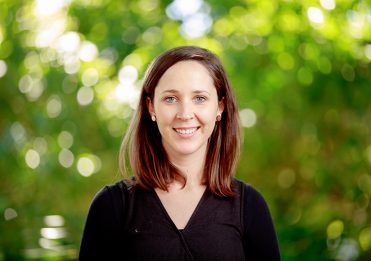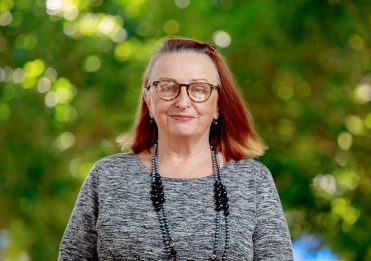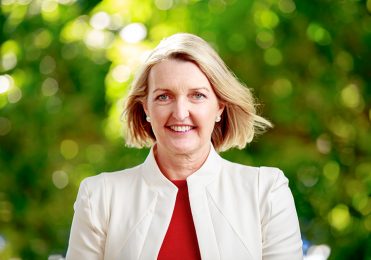Originally published in 2017
First Movement: Time Moves Slow
In September 2001, just days before the Twin Towers collapsed in New York, a performance of John Cage’s ORGAN2/ASLSP (As Slow As Possible) began in the St. Burchardi church in the small town of Halberstadt, Germany. Cage’s devotees had constructed a large-scale realisation of the composer’s intention. The work was to be stretched out, commencing with notated silence lasting more than two years. Yes, two years. The first three notes then sounded on the purpose-built organ and rang out for another two and a half years.
Although there have been just a handful of notes performed since then, the next glorious note will sound just prior to our Year 12 external examinations in 2020.
The work will conclude in 2640. Like ancient pieces hung on gallery walls, this art is bigger than any of us.
Second Movement: Vignettes
At 6 am, Mrs Davidson rolls in. She will have the room set up by the time her young musicians arrive. Their first warmup resonates through the building at 7 am. Two floors up, Grammar Dance girls stretch and flex.
Following House Group and an impromptu cupcake party up on Level 5, girls dash to their first lesson. Outside Ms Eaton’s room on Level 2, a hidden balcony at the far back of the School provides solace for a Year 9 girl using her mobile to record a collage of layered vocals to reinterpret a Canadian folk song. She will polish her work at home after Wind Symphony rehearsal and upload her efforts to Ms Eaton later tonight for feedback.
On her way to find a piano, a Year 7 girl brushes her hand along a row of gongs from a loaned Indonesian gamelan orchestra. Her theoretical understanding of the Western musical scale is slowly transforming.
By lunch, song writers hone their craft in clumps. The concert is next week and they rehearse their ability to transform energy to vocal folds, air then ear. Captured on a friend’s phone, their songs resonate years after they leave School. Their songs are bigger than us.
Mrs Riveros ushers girls to Level 3 for Drama. They are late, with semi-scrubbed paint on their faces following the open-air dance party to celebrate Blue Day. Within a minute, Stanislavski’s timeless questions rule their movements: Who am I? Where am I? What time is it?
Minutes after the school-day finishes, these same Drama students re-occupy useable space on stairs and alcoves like black ants before a storm. It must be Week 7. Grammar Singers are in full flight. Avoid the stairwells to the north, Charlotte and Emily are recording their ukulele duet this afternoon, basking in the warm reverberation of the space.
Meanwhile, up on Level 6, four Visual Art teachers become subjects in a visceral student installation. The Year 12 girl, in a lab coat, directs them into booths where they are instructed coldly to sign and date their own Death Certificate. The teachers will be here long after the girl has packed up and headed off to soccer. They discuss her work into the night. Two years later, they will still talk about it.
After a long day, Ms Hollie rushes to catch the ferry home to Coochiemudlo.
Third Movement: The Blink of an Eye
Ten years have passed since the Cherrell Hirst Creative Learning Centre (CLC) was officially opened in May 2007. Accolades including the Sir Zelman Cowen Award for Public Architecture remind us: this building is titanic in its impact on the daily lives of our students. The building itself is art. It will be here long after we are gone.
Before the CLC was constructed, Drama girls had class upstairs in the Main Building. The old Music classroom is now Mr Vogler’s sawdust-filled workshop. In some respects, it seems like a long time ago, but consider Bill Bryson’s uncanny ability to help us re-consider scale. He reminds us that if Earth’s history were compressed into 24 hours, humans would emerge one minute and seventeen seconds before midnight (Bryson, 2003).
The CLC represents a small sliver of our 142 years at Brisbane Girls Grammar School—it arrived at 10.18 pm when the School’s life is scaled back to 24 hours—but it quickly transformed the Creative Arts. Its extroverted design is perfect for what Professor Su Baker (2016) calls a ‘porous exchange of infrastructure’, allowing audiences, gallery viewers and students clarified access to the arts.
Our recent ArtsFest, curated by Arts Captains Rosie Dann (12B) and Laura Kimble (12E), capitalised on the architecture of the CLC with a series of outdoor lunchtime concerts. Rosie and Laura echoed the sentiment of Risenhoover and Blackburn who long ago suggested ‘unviewed paintings, unheard sonatas and unread poems fail to fulfil the criteria of the creative act, for creativity has a social dimension’ (1976).
Fourth Movement: The Tide
When she was Writer in Residence at Brisbane Girls Grammar School, Professor Erica McWilliam (2012) observed and articulated a key aspect of our work in the arts: our steadfast focus on ensuring ‘pleasure of the rigour of learning’ for our young artists, ensuring they had requisite skills to meet twenty-first century demands. What good are the arts in a broad course of study? ‘It is not garnish to the productivity roast, but fundamental to the sort of complex, challenge-ridden and rapidly changing economic and social order in which our young are seeking a future place and meaningful identity’ (McWilliam, 2016).
The UNESCO Road Map for Arts Education (2006) features Sir Ken Robinson’s view on the role of the arts, reminding us that ‘imagination is the characteristic feature of human intelligence, creativity is the application of imagination, and innovation completes the process by utilising critical judgement in the application of an idea’. Pleasurable, rigorous work in the Creative Arts gives students every opportunity to hone these capacities in an innovation-centric era.
Far from pandering to the common view that the arts are ‘to be consumed by the professions in their leisure hours’ (Borland J et al, 2015), our contribution to a broad liberal education is to enable students to make more meaningful connections between their music-making, acting, artworking and their entire world beyond School.
References
Baker, S. (2016). President’s Welcome: Engaged Research and Teaching in the Creative Arts? Retrieved from https://nitro.edu.au/articles/edition-4/presidents-welcome-engaged-research-and-teaching-in-the-creative-arts.
Borland, J. et al. (2015). Turnbull Unveils Cabinet Line-up: Experts Respond. Retrieved from http://theconversation.com/turnbull-unveils-cabinet-line-up-experts-respond-47626.
Bryson, B. (2003). A short history of nearly everything. New York: Broadway Books.
McWilliam, E. (2016). Two Cheers for STEM, Three Cheers for Creativity. Retrieved from http://www.ericamcwilliam.com.au/two-cheers-for-stem-three-cheers-for-creativity/
McWilliam, E., & Taylor, P. (2012). Personally Significant Learning. Retrieved from http://www.ericamcwilliam.com.au/personally-significant-learning/
Risenhoover, M., & Blackburn, R. (1976). Artists as professors: conversations with musicians, painters, sculptors. Urbana: University of Illinois Press.
UNESCO. (2006). Road Map for Arts Education. the World Conference on Arts Education: Building Creative Capacities for the 21st Century. [PDF]. Retrieved from http://www.unesco.org/new/fileadmin/MULTIMEDIA/HQ/CLT/CLT/pdf/Arts_Edu_RoadMap_en.pdf
Read reflective commentary from Director of Creative Arts, Mr Andrew Pennay, on his article, ‘Spacetime: a sonata in four movements’.
Although the Halberstadt performance of John Cage’s ORGAN2/ASLSP (As Slow as Possible) still hangs on the same notes, much has changed in the past few years at Girls Grammar due to our deep investigation into the cultural forces in our classrooms.
As a physical space, the Cherrell Hirst Creative Learning Centre continues to evolve, with teachers and girls manipulating the space to support their learning and thinking through powerful waves of curriculum change.
More important than this physical environment, we are witnessing a School-wide shift towards a culture of deeper and more visible thinking. For instance, Creative Arts teachers have been transforming our practice through reconsideration of time, the kinds of language we employ, the ways we model learning, specific classroom routines and other opportunities we provide for students.
As curricula change, Creative Arts staff are inclined to zoom out and consider the bigger picture. How do we ascribe importance to various facets of arts learning? To what degree do we facilitate interdependence of the brush stroke and the message? What do we want girls to be like as adults? What are the residuals of the time spent in our care?
More than ever, as we re-examine our offerings, we are also inclined to zoom in and consider the smaller picture. What do you hear in the very first second of Taylor Swift’s song, You Need to Calm Down? How does your lens shift when you hear the rest of the first bar? Was that a finger clicking? What do you think will happen next? How has your thinking changed across that very first bar of the piece?
I am excited that we are entering an era of greater homogeny in arts instruction, particularly owing to Queensland’s more formalised stipulation of an inquiry approach to arts learning. This, coupled with a trend towards a ‘reverse chronology’ approach—looking at contemporary works and following logical pathways back through time—has led to insightful student works in recent years.




